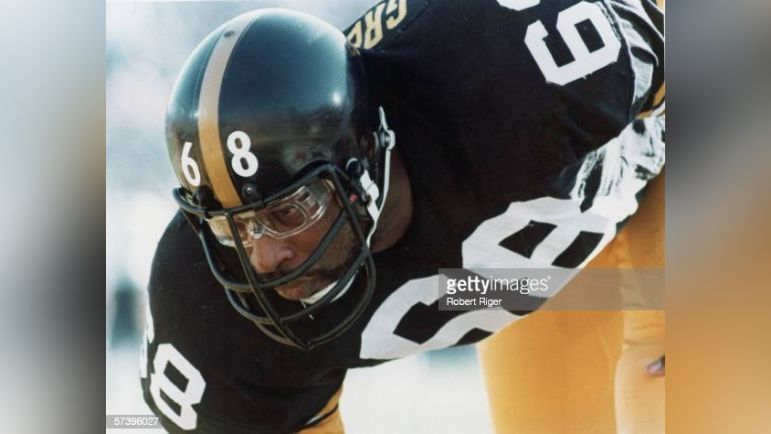L.C. Greenwood leads an impressive list of Pittsburgh Steelers nominated for the 2025 Hall of Fame Senior Class. The list was unveiled Tuesday afternoon, Greenwood one of six players who spent all or part of their career with the team. The other five are K Norm Johnson, DL Gene “Big Daddy” Lipscomb, LB Andy Russell, S Mike Wagner, and HB/DB Byron “Whizzer” White.
Greenwood is the team’s biggest Hall of Fame snub, making up one-fourth of the Steelers’ Steel Curtain. A six-time Pro Bowler and two-time All-Pro, he was part of all four of Pittsburgh’s Super Bowl wins during their 1970s dynasty. Unofficially, he is credited for 78 sacks, a half-sack more than DT Joe Greene recorded in his career. One of scout Bill Nunn’s HBCU gems, Greenwood was selected in the 10th round of the 1969 NFL Draft, Chuck Noll’s first class. He spent his entire career with the Steelers, playing through the 1981 season. Greenwood made 135 career starts. Aside from “Steelers fatigue,” there’s been no explanation for why he’s been excluded from the Hall of Fame (not that “fatigue” is a worthy excuse, anyway).
Johnson served as the Steelers’ kicker from 1995-1998, making 105-of-127 kicks with the team. His long was 52 yards. Johnson is best remembered for the nine years he spent with the Seattle Seahawks, named an All-Pro in 1984. He kicked until he was 39, spending the 1999 season with the Philadelphia Eagles. Johnson finished his career with 366 field goals, still ranking in the top 25 in league history.
Lipscomb was one of football’s first athletic big men. With his personality the only thing larger than his 6-6, 300-pound frame, he never played college football and was scouted while playing for the Marines. He began playing for the Los Angeles Rams in 1953 before becoming a Baltimore Colt in 1956. Traded to Pittsburgh in 1961 for WR Jimmy Orr, he had a career year in his first season with the Steelers.
According to unofficial records created by Pro Football Reference, Lipscomb registered 17.5 sacks in that ’61 season. Teaming up with Ernie Stautner, he notched another seven sacks the following season. Lipscomb died in May 1963 from a suspected heroin overdose, though that account has been disputed by friends and family who claim Lipscomb hated needles.
Russell was one of the few holdovers from the pre-Noll era. Drafted in 1963, Russell made up the trio of one of football’s great linebacker corps alongside Jack Ham and Jack Lambert. A seven-time Pro Bowler, Russell was part of the Steelers first two Super Bowl victories. Durable as anyone, the only NFL games he missed came in 1964 when he was deployed to Germany with the US Army. Russell sadly died this past March at the age of 82.
Wagner was an underrated safety for the 70s Steelers. An 11th-round pick in 1971, he immediately started as a rookie and didn’t look back. Wagner went on to start 116 games for Pittsburgh, making two Pro Bowls and earning four Super Bowl rings. In 1973, he led the league with eight interceptions and recorded 36 for his career. In 1976, he was named second-team All-Pro as part of the greatest defense in NFL history, a unit that allowed less than 10 points per game.
White was considered one of the first stars in Steelers history with the contract to prove it. Earning a high sum of $15,000 at the time, Art Rooney Sr. convinced White to give Pittsburgh a try. He led the league in rushing yards and yards from scrimmage in 1938 though his presence didn’t help the 2-9 Steelers. White left after the season to attend the University of Oxford on a Rhodes Scholarship. He returned to the NFL and spent two seasons with the Detroit Lions in 1940 and 1941. White later became a Supreme Court Justice.
According to the Steelers’ website, the Hall of Fame committee will narrow the list of candidates down to 50 names in the next “few weeks.” In total, 183 players were nominated today. Other notable names include QB Ken Anderson, who once served as the Steelers’ QBs coach, former Hog LB Joe Jacoby, LB Clay Matthews Sr., and DB Lester Hayes.
The Senior Committee is separate from the traditional Hall of Fame ballot and seeks to honor players from decades ago and give them a path to make it into Canton. Those inducted need 80 percent of the vote.







